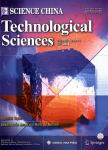Switchable hydrophobic-hydrophilic layer obtained onto porous alumina by plasma-enhanced fluorination
Switchable hydrophobic-hydrophilic layer obtained onto porous alumina by plasma-enhanced fluorination作者机构:Institute of Condensed Matter Chemistry of Bordeaux (ICMCB-CNRS) University Bordeaux 1 87 Avenue du Dr. A. Schweitzer AGFA GEVAERT NV Septestraat 27
出 版 物:《Science China(Technological Sciences)》 (中国科学(技术科学英文版))
年 卷 期:2009年第52卷第1期
页 面:104-110页
核心收录:
学科分类:0810[工学-信息与通信工程] 07[理学] 070205[理学-凝聚态物理] 08[工学] 080501[工学-材料物理与化学] 0805[工学-材料科学与工程(可授工学、理学学位)] 0702[理学-物理学] 0812[工学-计算机科学与技术(可授工学、理学学位)]
主 题:porous alumina rf-plasma fluorination offset applications hydrophobic-hydrophilic switchable layer XPS contact angle
摘 要:Conventional lithographic printing processes using porous alumina for offset applications generally use wet routes. Recently dry processes have been developed which are based on a heat-induced hydrophilic/oleophilic conversion of one or more layers of the coating so that a stronger affinity to-wards ink or water fountain is created at the exposed areas with respect to the surface of the unex-posed coating. Treatments involving rf plasma-enhanced fluorination (PEF) constitute exceptional tools for modifying the surface properties of materials. Many advantages of these techniques can be indeed outlined, when compared to more conventional methods: room-temperature reactions, chemical modi-fications limited to surface only without changing the bulk properties, possible non-equilibrium reac-tions. The influence of PEF treatments on porous alumina layer used in printing plates has been tested with various fluorinated gases (CF4, C3F8 and C4F8) and characterized by XPS. The hydrophobic prop-erties of the fluorinated layer have been deduced from contact angle measurements. Using C4F8 rf-PEF treatment, the outmost surface of the hydrophilic alumina substrate used for lithographic printing is hydrophobized, or in other words, the hydrophilic substrate is converted into a support with hydro-phobic properties. Once being hydrophobized, the surface layer may be rendered hydrophilic using a heat pulse, thus giving rise to switchable hydrophobic-hydrophilic properties of the material.



